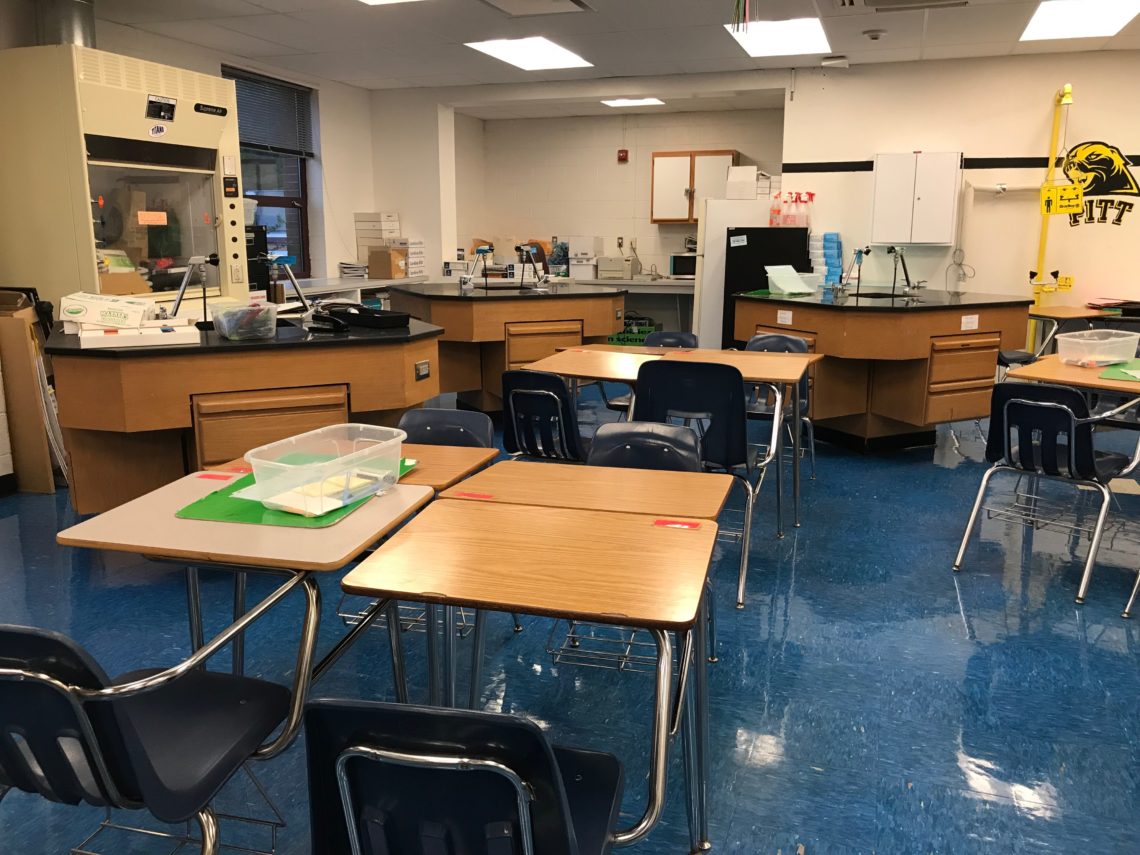The Program Takes an Innovative Approach to Education
Bridgette Adu-Wadier
From transforming the school garden to learning the science behind the Black Plague, the STEM (science, technology, engineering, mathematics) program has aimed to make subjects such as science and history, areas that many students are not always interested in, come alive with creative projects and research.
“Our whole goal is to really get students to actually learn to do instead of learn about. There’s a big difference,” said 9th grade STEM Academy Biology teacher Benjamin Matthews. “A lot of times in education, we learn about things and we rarely have a chance to actually do those things.”
The academy, launched at the Minnie Howard campus in the 2013-2014 school year, was an idea that came from administrators at Central Office to deliver more on Career and Technical Education (CTE) goals specifically in science, engineering, math and technology.
According to George Washington Middle School Dean of Students Chris Speich, the goal was to “do things outside of the box” to deliver on CTE goals. This would help make these subjects that were commonly seen as intimidating, difficult and uninteresting more palatable to more student going into the field later on.
“I think that for any teacher, the biggest challenge is that it’s hard for kids to buy what the teacher is selling,” Speich said.
Thus, the STEM Academy has a different approach to education — experiential, project-based and hands-on learning to teach students how to solve problems that cannot be Googled.
Ninth grade students in the program take eight STEM specific and cross-curricular courses, including an introductory engineering course, also taught by Matthews. Students gain support in all of their classes for various subjects, such as writing in English class being beneficial for the scientific process for Biology labs.
While the academy is set up in a cohort model at Minnie Howard, the freshmen gain a plethora of new opportunities once they become sophomores. In fact, the courses are so vast and varied that it becomes harder to keep the community in tact.
“Once the students decide what it is they want to study it’s really hard to keep that family together,” explained Matthews.
TC manages this differently every year, such as getting a guest speaker to come and deliver lectures. There is also the engineering course that students are required to take every year. Plans are still being developed to keep the true cohort academy together through other means.
The academy has several community partnerships that allows teachers to expand their classroom outside the building. This is done through college field trips, visiting the Department of Energy and finding internship opportunities with science organizations.
Shawn Lowe, who teaches Science Research at King Street, has had several students interested in STEM place at science fair competitions. Lowe’s students have gained multiple opportunities to present projects at conferences and to scientist communities through her connections.
“The other great thing about the Science Research class is that it allows for career exploration in a way that other classes don’t,” Lowe explained.
One of Lowe’s students researched cyber security, created her own system and learned about honeypots, a mechanism designed to detect unauthorized attempts at the use of information. She created one and had hackers come into the system, observing them in real time. This opportunity gets students close to the daily work of a professional and exposes them to career skills directly applicable to their ideal field.
Ninth grade STEM students can get involved with the Virginia Junior Academy of Science Symposium, where they can present their science fair projects to college professors. They get supported in finding projects of interest to solve and to put out products. At first, only around seven or eight students would participate; now, about forty to fifty kids go to the conference each year. Lowe’s influence has led to several students through all four grades winning awards.
STEM focuses less on answering questions and more on solving problems that apply to society. Along with concentrating on math and science, students are prompted to design applications and machines to soon create innovative technology.
The foundation of the STEM program is creativity in creating solutions, which arts and humanities subject do complement.
“We have a duty to include arts,” added Speich on the matter. Including courses STEM related courses such as theatre, arts and music would be beneficial in teaching students how to approach different types of problems with different artistic methods. Arts are incorporated in answering the essential questions of the curriculum, which are more open-ended toward creativity.
“We’re not so worried about defining words; we’re worried about how those words relate to solving problems…. So every lesson is centered around, ‘What problem do we have to solve today?’ as opposed to ‘What is a cell?’” said Mr. Matthews.

